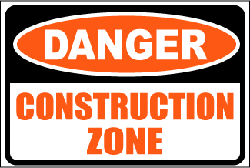 When composing a narrative essay, dialogue is an essential component for creating an engaging story. Without the spoken words, the reader can’t “hear” the characters (the real people who you are introducing to your audience) and get to know them. Simply summarizing what a character said isn’t as engaging or interesting as direct dialogue between characters.
When composing a narrative essay, dialogue is an essential component for creating an engaging story. Without the spoken words, the reader can’t “hear” the characters (the real people who you are introducing to your audience) and get to know them. Simply summarizing what a character said isn’t as engaging or interesting as direct dialogue between characters.
When composing a narrative, you’ll most likely be re-creating conversations from the past. Don’t get too caught up in whether or not you recall exactly what was said. That is less important as how you portray the people in your narrative with their language, mannerisms, and other characteristics of their speech. When trying to decide exactly where and how to incorporate written dialogue, there are 3 essential questions to ask yourself before you begin:
-
Is it AUTHENTIC?
-
Is it ESSENTIAL?
-
Is it DOING MORE THAN ONE THING?
Is it Authentic?
Authentic dialogue realistically portrays the person speaking. If it’s authentic, the spoken words will sound exactly like the person would sound in real life. This doesn’t mean you have to incorporate slang in every sentence, but it does mean that the diction, word choice, phrasing, and other stylistic choices can easily be attributed to the person who is speaking in the narrative. It shouldn’t be too formal or precise. Below is an exchange of dialogue between a son and his mother:
“Jason,” my mother asked, “what were your activities and pursuits at your elementary school today?”
“I had a full day of activities, Mother. My teacher was quite stimulating, and recess was especially delightful,” I said.
Doesn’t quite sound right, does it? Most likely, an exchange between a mother and young son might sound something like this:
“How was school today?” Mom asked.
“It was okay, I guess.”
The first example obviously sounds stilted and formal, unlike how most families speak. The second example is more realistic. Some writers might choose to even use slang in their speech, such as “I dunno,” or “Kinda good,” but be very careful of overusing phonetic substitutes, as it becomes a bit tedious to read and runs the risk of characters sounding illiterate.
Is it ESSENTIAL?
“Hi Jim. How are you?” I asked.
“I’m fine. How are you?” Jim said.
“I’m fine,” I said.
Holy cow, this is BORING! An exchange like the example above is not essential to the narrative. It’s not really doing anything toward moving the narrative forward or showing any kind of characterization of the speakers. Compare this with the following exchange:
“Hey Jim,” Todd said, his voice almost a whisper.
“Hey Todd–everything okay?” Jim asked, concerned.
“It’s my dad,” Todd said, breaking down.
In this exchange, the everyday-ness of the previous example is avoided. There may have very well been niceties exchanged, but in written dialogue, the writer must compress time and get to what’s essential. Here we get tension, we get emotion, and the narrative is propelled forward. Which leads us to essential element #3.
Is It Doing More Than One Thing?
Dialogue, whether in fiction or nonfiction, isn’t meant to simply allow characters to “speak.” If this is all it’s doing, then it isn’t doing enough.
Dialogue should draw a characterization. This means that the dialogue works to show traits of the person speaking, or the relationship between the speakers. What they say, how they say it, and the tone they use provides the reader with lots of information they wouldn’t get otherwise.
The following excerpt is from Beloved by Toni Morrison, an expert at characterization through dialogue. Notice in this example that Morrison mostly avoids using phonetic spellings, but simply drops words to characterize the speakers:
“Something funny ‘bout that gal,” Paul D said, mostly to himself.
“Funny how?”
“Acts sick, sounds sick, but she don’t look sick. Good skin, bright eyes and strong as a bull.”
“She’s not strong. She can hardly walk without holding on to something.”
“That’s what I mean. Can’t walk, but I seen her pick up the rocker with one hand.”
“You didn’t.”
“Don’t tell me. Ask Denver. She was right there with her.”
In this exchange, Morrison avoids speaker tags, except in the first line to set up the exchange. The “he said, she said” can take away from an otherwise engaging exchange, and here, it isn’t necessary. Also notice that the two people speaking have distinctly different styles, so it’s easy to differentiate each speaker from the other.
Consider everything the following bit of dialogue is doing:
“What’s the capital of Spain?” Jerry asked, pausing over his crossword puzzle.
Susan looked up from her book and rolled her eyes. “Madrid, duh.”
“Why are you so sarcastic all the time?” Jerry slammed his pencil on table. He
looked like he was going to cry. “I don’t think I can take much more of this.”
Poor Jerry! You can cut the tension with a knife! What’s going to happen? Several things are happening with this dialogue-
- Characterizes speakers
- Shows relationship between characters
- Creates tension
- Moves narrative forward
When you’re writing dialogue for your narrative, consider why you are incorporating each exchange and know what your purpose is for including it. If it isn’t essential, leave it out.
There really are no secrets to writing effective dialogue, but knowing who your characters are and why you’re incorporating every exchange will help in determining what to leave in and what to take out. Avoid phony or forced speech, and use speaker tags thoughtfully. When you’re finished, read your essay aloud to “hear” what you’ve written. Try reading some essays or short stories to see how other writers do it. Follow these steps, and you’ll be writing dialogue like a pro!







